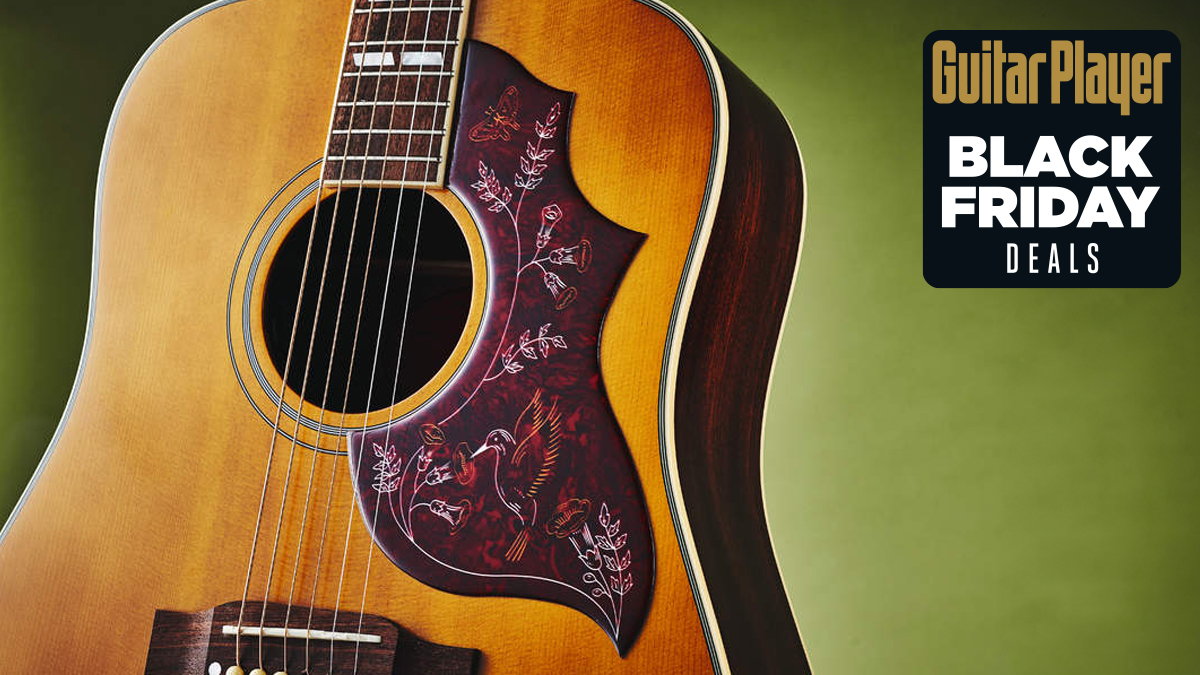We Tested Five Modern Takes on the Holy Grail of Humbuckers – Here’s How They Stacked Up
Have any of these cracked the vaunted Gibson PAF code? Let's find out.
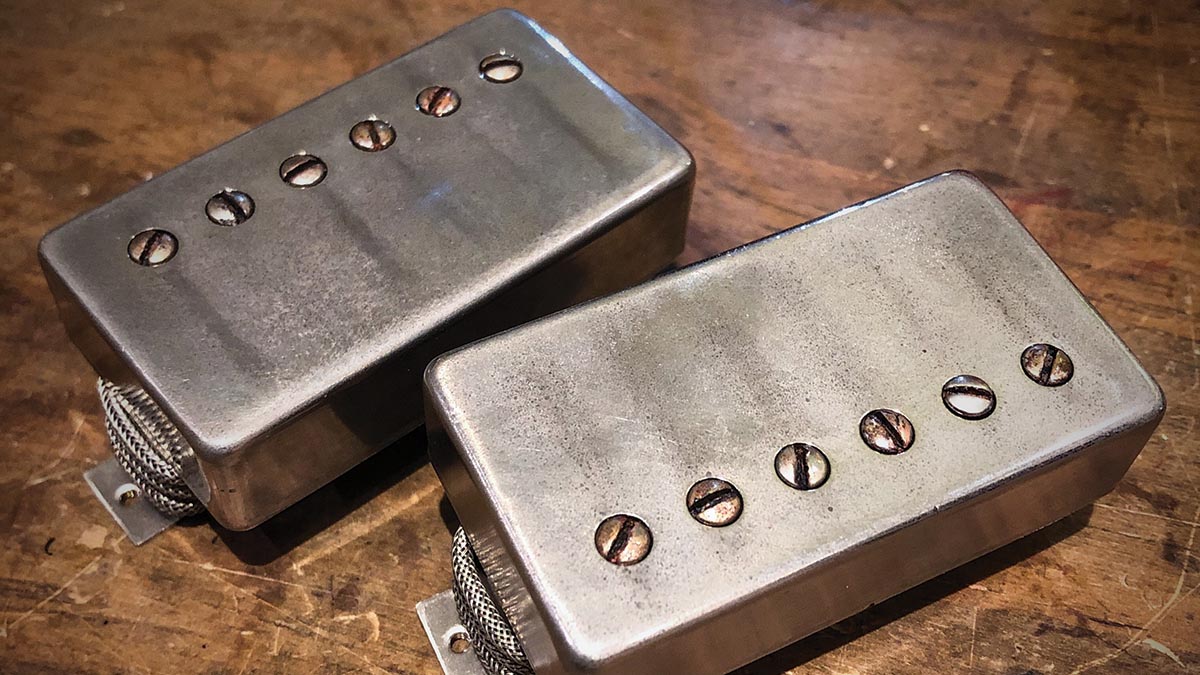
Beloved for its dynamic touch sensitivity, clarity, openness, juicy harmonic richness, and an addictive blend of biting attack and forgiving compression, the original Gibson PAF – Patent Applied For – humbucker of the late 1950s has long been the Holy Grail of vintage pickups, and a challenge to reproduce.
Several admirable re-creations have emerged in recent years, however, many of which are getting closer to cracking the code. We’ve rounded up several of these in the pages of Guitar Player in the past, usually logging a batch at a time every couple of years, and this issue brings us the latest such investigation.
Most makers today agree on the essential components and construction of the original PAFs, though some differ in the formulations of some of these parts. After all these years, there’s still plenty of debate about which approach best achieves the desired PAF-like result.
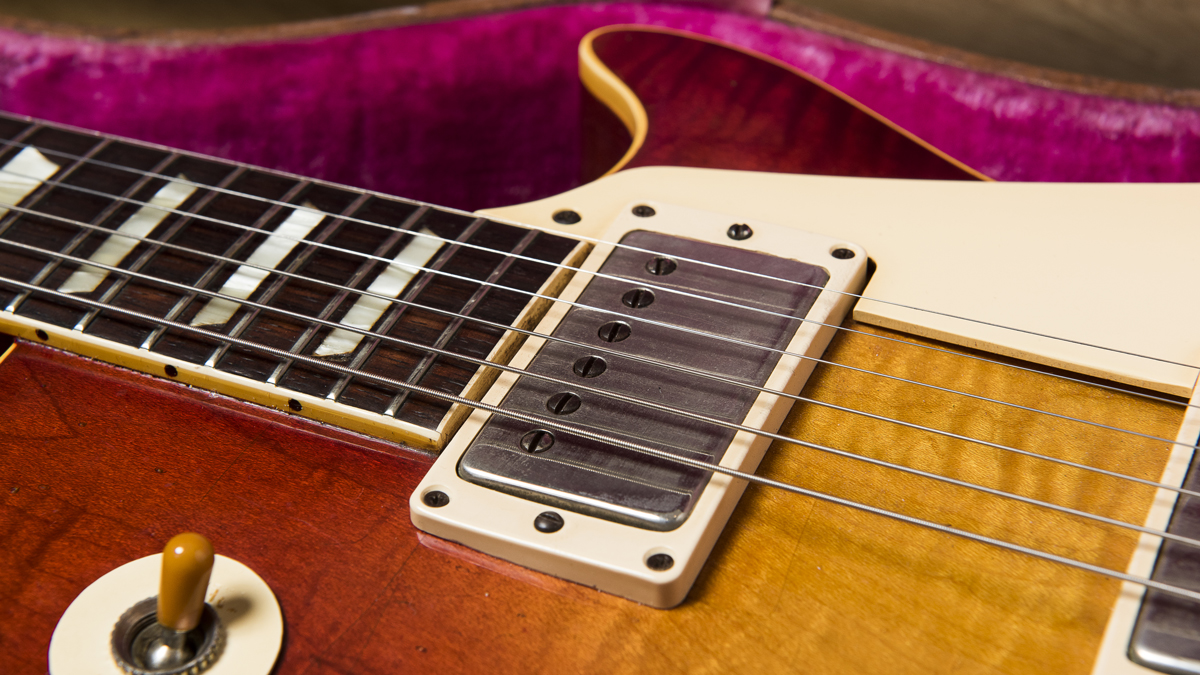
Do you source the most accurate components you can find, put them together in a way you determine to be closest to that used at Gibson in the late ’50s, and trust that will get you there? Or do you let your ears guide you, and create “vintage-style” humbuckers that might not rigorously adhere to the recipe, but which are tuned by ear to sound like an acclaimed set of originals?
After all these years, there’s still plenty of debate about which approach best achieves the desired PAF-like result
This roundup evaluates pickups from makers that take both approaches. We should note that this is not intended as a shootout, as such, but as a roundup of products already deemed worthy of consideration, each of which likely offers characteristics that will prove best for some players out there.
All pickups below are priced as per a set of two, including covers, and were reviewed with two-conductor vintage-style wiring, though many makers offer four-conductor wiring where coil-splitting options are desired.
Each of these five sets falls broadly into what we might call the “medium-wind” category as regards DC resistance and relative output strength, although while that DCR measurement is given for all pickups, it is in no way an accurate indication of their power or sonic merits.
All the latest guitar news, interviews, lessons, reviews, deals and more, direct to your inbox!
All sets were tested in a 2019 Gibson Custom Shop 1958 Les Paul Reissue, with upgraded pots, tone caps and wiring, into a tweed-Deluxe-style 1x12 combo, a Friedman Small Box head and 2x12 cab, and a Fractal Axe-FX III into studio monitors.
Bare Knuckle Pickups The Mule Set
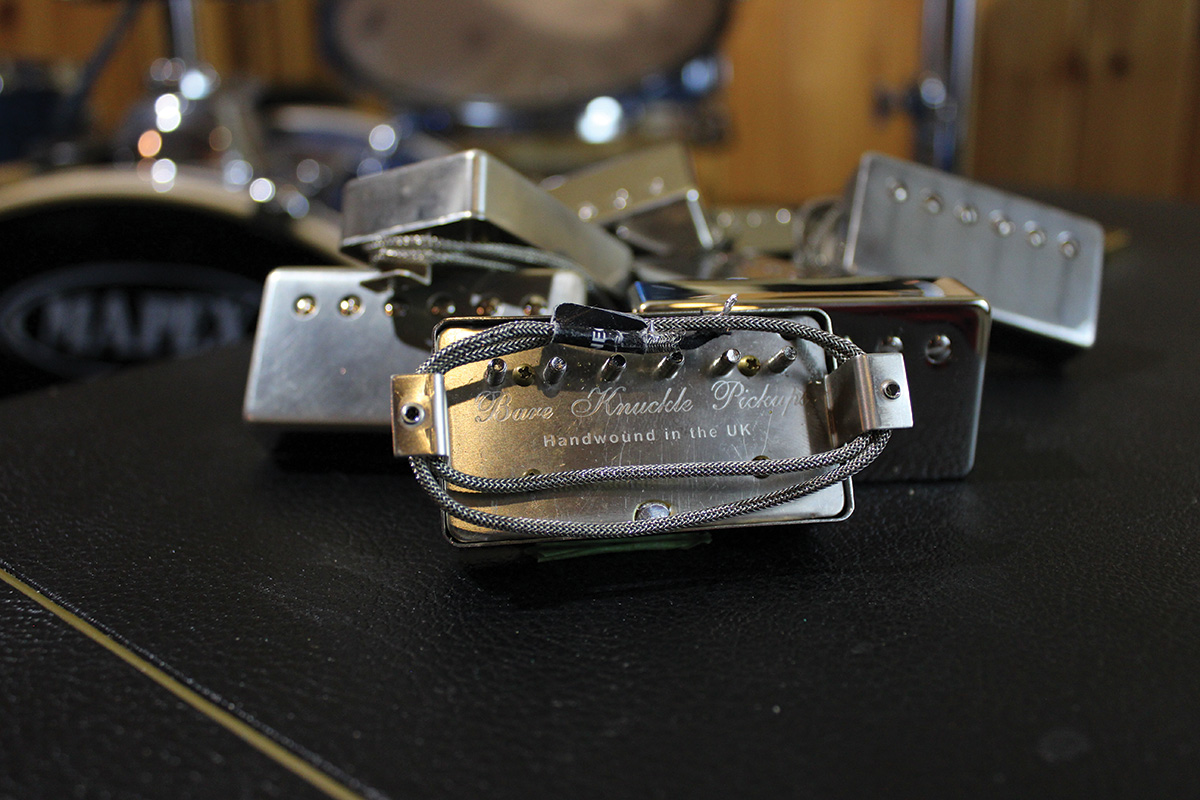
Based in Falmouth, England, Bare Knuckle was formed by touring and studio guitarist Tim Mills back in 2003, and has risen to greater prominence in recent years as the company’s reputation ascended.
Bare Knuckle offers a wide range of pickups, but Mills tells us “the Mule humbuckers have been our best-selling humbuckers since I started the company. I modeled them on the best ’59 PAFs I was able to play-test and analyze.”
Period-correct construction details include a solid nickel-silver base plate and cover (lightly aged, in this case), nickel-plated slugs, Fillister-head #5 pole screws, sand-cast Alnico IV magnets, maple spacers, and butyrate bobbins wound with unequal turns of 42 AWG plain-enamel wire.
The pickups are unpotted and measure 7.36k-ohms in the neck and 8.42k-ohms in the bridge. It’s worth noting that Bare Knuckle also sells its own Custom Audio Taper CTS potentiometers, regarded by many as one of the better reproductions of vintage-taper pots available.
The company supplied a set for our test guitar, and it delivered impressive results. In use, the Mules presented an inspiring blend of clarity and thickness that was never dull or hazy, but put just a little fur around the note, while retaining plenty of bite in the attack.
Their overall voice is certainly authentically “PAF-y,” with perhaps a tweak toward a slightly euphonic creaminess that addresses what many players seek in a vintage-style humbucker, with that addictive slur in the transients that urges you to keep sliding and bending.
I found this set is pitched to perform well both clean and mean, without muddying up the former or lacking sting and aggression for the latter. Into overdrive, there’s a tasty enlivening of the harmonic spectrum, while other aspects of these pickups’ clean personalities still shine through, with some added woodiness in the neck position, making it a lovely, expressive blues lead voice.
All in all, the Mules offer broad appeal, and one that most vintage-leaning players should find easy to like. Without implying they are a compromise in any way, they’re simply a great snapshot of what many players seek when they go PAF hunting, with a musicality and touch sensitivity that makes it easy to forget the tone quest and just play.
- CONTACT: Bareknuckle Pickups
- PRICE: $340 street
- REMARKS: An appealing all-rounder with good balance and clarity, and enough harmonic hair around the notes to entice the ear.
Rocketfire Guitars 1959 Set
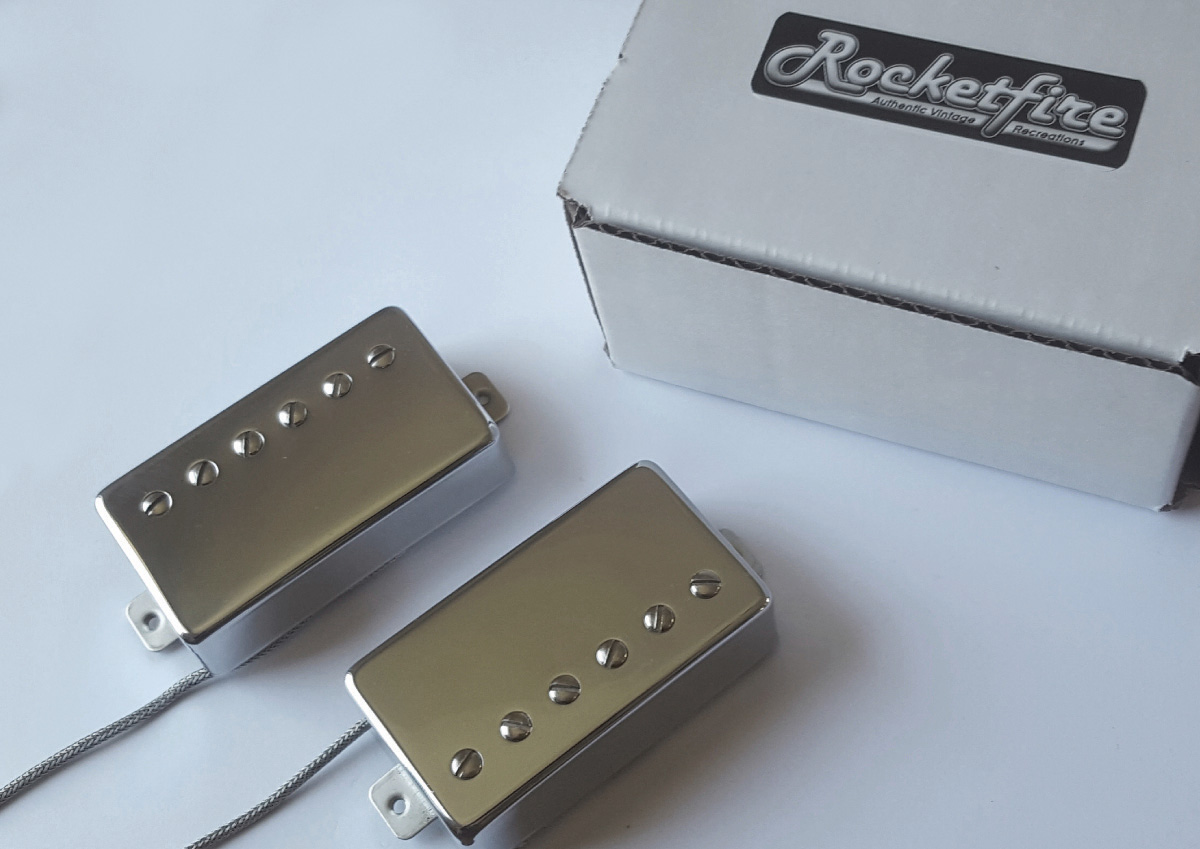
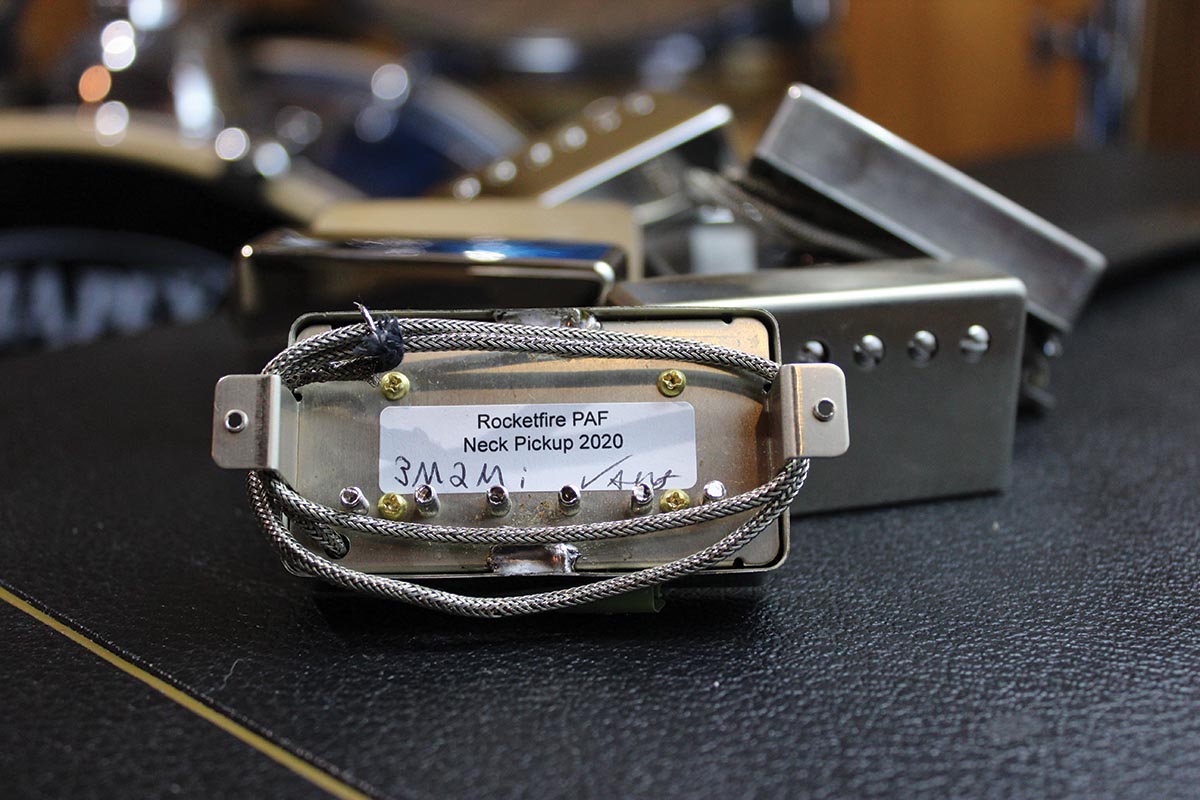
Nick Sorenson founded Rocketfire Guitars in Missouri in 2004 mainly to build relic F-style guitars. He has arguably garnered even greater acclaim in recent years for his in-house pickups. Rocketfire Total ’60s Strat pickups, as used in many popular Danocaster guitars and others, have long been a favorite of many players. Sorenson’s PAF-style sets similarly capture magic for humbucker users.
“Our 1959 PAF-modeled pickups are not wax potted and are wound in a unique way that captures the wood and unplugged sound of the guitar,” Sorenson tells GP. “They have the same subtle compression that makes our Strat pickups sound the way they do. This is super important because it gives the highs crystal-clear definition without any harshness.”
The test pickups have brushed-nickel covers and measure 7.85k-ohms in the neck and 8.58k-ohms in the bridge. In addition to the list of period-correct components, Sorenson uses 42 AWG plain-enamel wire and both Alnico II and IV magnets. He’s particular about sourcing a variety of Alnico IV that avoids the anemic sound of some types while shunning what he hears as the harshness of some Alnico Vs.
“But I don’t divulge in what position I use each magnet,” he says. “There’s gotta be some mystery to all this.”
As per the premise, the 1959 set has that authentic PAF-like biting edge to the pick attack, but it’s couched in an overall blanket of slight compression that rounds off any potential ice-pickyness, and it’s enlivened by a very appealing harmonic swirl throughout.
The bridge pickup is thick and muscular in the mids but with good sonic bloom and no hint of congestion, and just a little bit of creaminess without descending into mush. Played clean, the neck is admirably tight even on the low E, yet with a succulent, throaty, three-dimensional quality that’s delectably full.
Into an overdriven amp, this translates to a guttural rumble that avoids mud or darkness, with enlivening sparkle amid the thickness. As a result, the middle position, through a clean amp, is a little richer and less hollow than some can be, and more an equal blend of bridge-position sting and neck-position warmth.
It’s super-versatile and a powerhouse where some other humbucker sets can feel a little thin. Overall, Rocketfire Guitars’ 1959 set displays a lot of personality and musicality, with a checklist of authentically PAF-like characteristics and appealing playability, aided by Sorenson’s nuanced blend of compression and bite.
- PRICE: $385 street
- CONTACT: Rocketfire Guitars
- REMARKS: A tasty blend of compression and bite from both positions, with a particularly full, yet clear neck pickup and great marriage of personalities in the middle position.
Sunbear Pickups ’59 SB-PAF Custom Hand-Aged Set


A longtime friend and associate in the U.K. recently expressed his belief that Stuart Robson of the relatively newer maker Sunbear Pickups in Knebworth, England, was on to something special in the PAF department.
On the strength of this ’59 SB-PAF set, I’d say he wasn’t wrong. Billed as “custom,” and including Robson’s tasty and realistic hand aging, this is what you’ll get if you request his current favorite take on an accurate 1959 PAF, with a neck pickup carrying an Alnico III magnet and wound to 7.24k-ohms, and an Alnico V bridge pickup wound to 8.32k-ohms, both unpotted.
In addition to testing and selecting accurate components such as 1010 low-carbon steel for the pole screws and keeper bar, 1215 steel for the nonchamfered slug poles, brass bobbin mounting screws, low-charging rough-cast Alnico grades, and other period-correct components, Robson has put a ton of thought and experimentation into coil winding.
“The winding of the coil is key to finding those PAF nuances,” he reveals. “Things like the vocal midrange ‘quack’ of the bridge pickup, the plummy lows and the airy, complex high-end seem intricately linked to the coil tension and the long internal lead wire that was a consistent quirk of PAFs, which creates an air gap at the center of the coil, and forces the first 500 or more turns of the coil into an unintentional scatter.”
To my ears, the Sunbear set had the most top-end sting of the bunch, with a slightly metallic “snick” from the highs at the front edge of the pick attack that’s characteristic of original PAFs.
Folded into a round, balanced response overall, with tight bass and complex harmonic swirl through the midrange, this made for excellent clarity from both pickups into clean amps, and superb articulation into overdrive as well, putting bite at the front of lead runs and crispy sizzle into rhythm chords.
An extremely dynamic set, the Sunbear ’59 SB-PAF pickups respond well to the guitar’s controls, easily rolling from aggressive upper-midrange snarl and meaty lower-midrange grunt when playing rock, to crystalline sparkle that shimmered over clean playing.
Dialing down the bridge pickup’s tone control to seven or eight also opened up new depths in a warmer, rounder pickup that nailed yet another pleasing voice. All told, the Sunbears are a great repro-PAF set that reminds us how many of the good vintage originals preface their juicy, plummy core with a lively, slicing attack that makes for attention-getting soloing.
- PRICE: $325 street
- CONTACT: Sunbear Pickups
- REMARKS: Clarity forward with outstanding articulation from all positions, all while delivering appealing depth, body, and harmonic sweetness.
Cream T Pickups Super Scanner Series Billy F Gibbons Whiskerbuckers Set
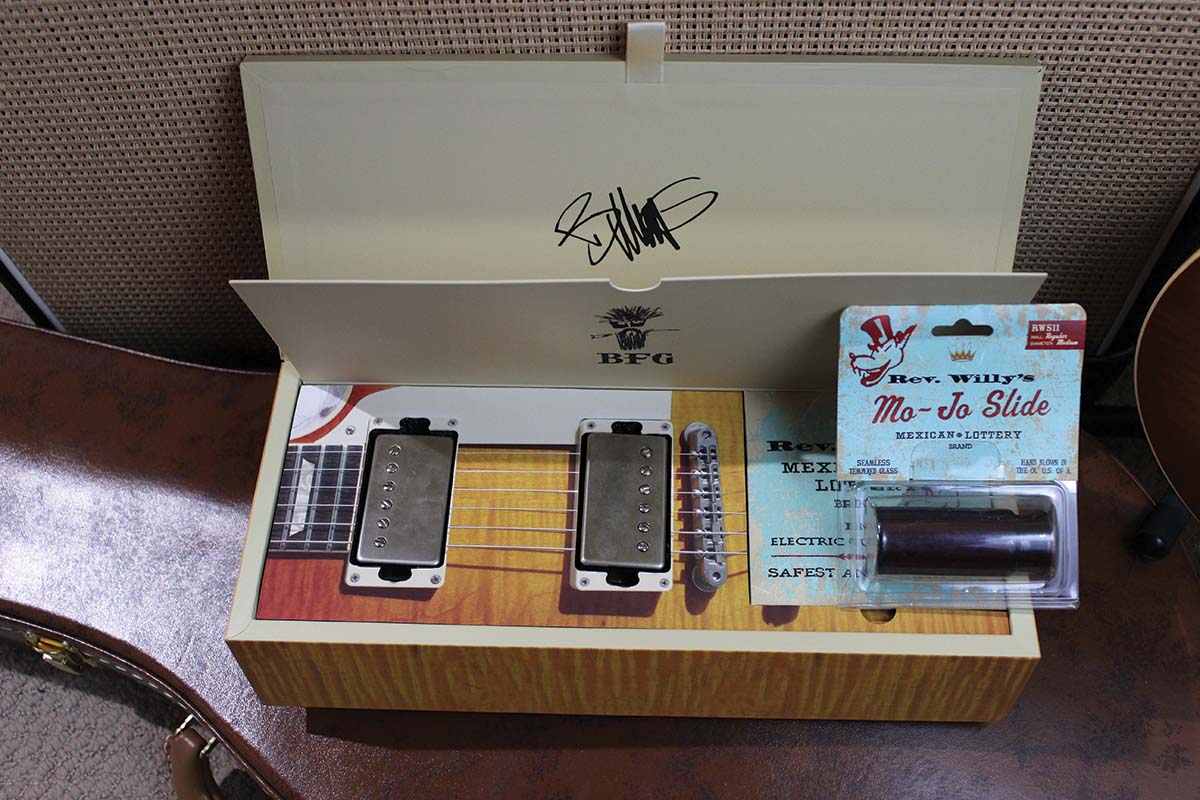
Manufactured by Cream T pickups in Ormskirk, England, the BFG Whiskerbuckers are the first of the company’s new Super Scanner series, produced following meticulous analysis of the original PAFs in – yes – Billy F. Gibbons’ legendary 1959 Gibson Les Paul known as Pearly Gates, using Cream T’s patented analog spectrum recorder.
They ship in a deluxe presentation case that includes a Dunlop Rev. Willy Coricidin bottle–like slide, Rev. Willy strings, and several picks. If your snake-oil alarm is going off already, bear with us. We had a thorough discussion of the process with its creator, Thomas Nilsen, and while it’s too complex to go into here, suffice to say it produces an accurate electronic blueprint of the pickup’s frequency response.
I created the Whiskerbuckers after I analyzed and got the whole frequency reading of the pickups in this particular guitar. And they sounded exactly the same when Billy did an A/B test
Thomas Nilsen, Cream T Pickups
That, along the impressive results, gives us no cause to doubt its veracity, and Nilsen’s three-decade collaboration with Gibbons inspires further confidence.
“I created the Whiskerbuckers after I analyzed and got the whole frequency reading of the pickups in this particular guitar,” Nilsen tells us. “And they sounded exactly the same when Billy did an A/B test. Analyzing the complete frequency range reveals unique dB in certain frequencies.”
Given the aim of the Super Scanner process, Cream T isn’t religiously vintage-correct about the pickups’ build process, although most parts are appropriate to the period. Nilsen tells us Pearly Gates has different types and strengths of Alnico magnets in each of its pickups. “I can’t give you the details on this matter, though,” he explains. “It’s recorded on special documents that are now locked in the bulletproof safe.”
Unlike most repro PAFs, the Whiskerbuckers are lightly potted within the bobbins only. They include bare nickel-silver covers (despite some early listings for aluminum), and the pickups measure 8.26k-ohms in the neck position and 8.21k-ohms in the bridge, matching the frequent imbalance of PAFs per position, as reflected in Pearly Gates’ pickups.
The result of all this? The BFG Whiskerbuckers sound huge and, indeed, very much in line with Gibbons’ own iconic tone, while also being very authentic among the spectrum of fatter, juicier-sounding original PAFs. While it might at first seem a little unusual to have the neck pickup slightly outgunning the bridge pickup, you soon get used to working with that, and what a rich, meaty tone that neck position delivers, too.
The bridge itself, though, is still delectably girthy, offering plenty of driven snarl and grind when you need it – along with good beefy twang into a clean amp – and it aces that cocked-wah lead sound with its tone control wound down a couple notches.
Put simply, the BFG Whiskerbuckers present an extremely satisfying blend of many of the tastiest characteristics of a slightly higher-wound PAF set, and sound massive in the process.
- PRICE: $449 street
- CONTACT: Cream T Pickups
- REMARKS: Big, thick, delectable humbucker tones for those seeking the fatter end of the spectrum, yet still with excellent string articulation.
ReWind Electric Creme Brûlée Set
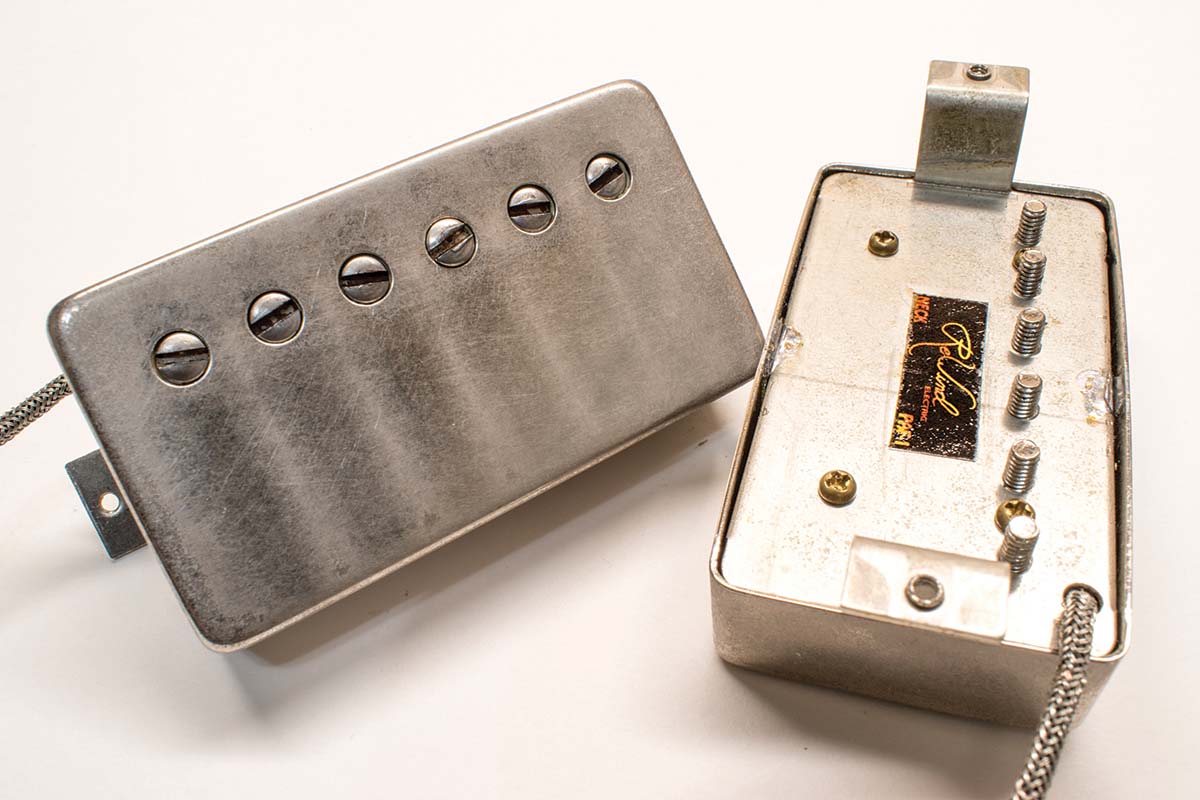

While all the better makers today have put a lot of thought into their PAF recipes, James Finnerty of ReWind Electric in Washington, Utah, has done enough research to write a book on the stuff. In fact, he and co-author Mario Milan have done just that with their 2018 tome The Gibson ‘PAF’ Humbucking Pickup: From Myth to Reality.
“The Creme Brûlées are my favorite example of a long Alnico II–magnet, hotter-coils 1959 PAF,” Finnerty says of the review set. “These capture what I was primarily after when I reluctantly started making my own pickups, chasing the sound and feel of many beautiful vintage examples that I got to experience through jobs working in studios and repair shops, and for collectors and dealers.”
My custom Alnico II magnets have a bit more treble clarity and a less mushy low-end than most
James Finnerty, ReWind Pickups
The use of period-correct components should go without saying, although while Gibson used a variety of magnet types – including Alnico II – in the originals, that choice here deserves a little explaining.
“My custom Alnico II magnets have a bit more treble clarity and a less mushy low-end than most,” Finnerty offers. “If someone has had bad experiences of Alnico IIs being dark and congested, they might enjoy mine in their rig, as they don’t suffer from that problem. They do have the soft, chirpy compression in the upper mids, but the bass isn’t flubby.”
While $520 per set might sound pretty expensive, it’s worth noting that Finnerty puts a lot of effort into his custom-made nickel-silver covers, too, and an uncovered set is discounted to $400. What’s more, all parts are made in the USA to his custom alloys and formulations.
The set’s neck pickup reads 7.75k-ohms and the bridge 8.52k-ohms. In use, the Creme Brûlées were bold and full, and also well balanced. A rich, thick humbucker in both positions, they never sacrifice clarity or string-to-string definition for the sake of luscious creaminess, which they deliver in abundance.
The neck is throaty and warm, but without going woofy or dull, while the bridge presents a punchy quack with some sting in its attack and is another pickup that might even sound its best with the tone control wound down to seven or eight (again, a perfectly legitimate way to maximize a good PAF’s potential). Together, they’re a lush and versatile pairing in the middle position.
Although they are a creamy, big-sounding version of the classic PAF, they also have plenty of crispness and top-end bite, which can be sharp and crystalline into a clean amp, but which translates to a lot of complexity with some distortion applied. All in all, this is a classy, versatile, and very authentically vintage-toned humbucker.
- PRICE: $520 street
- CONTACT: ReWind
- REMARKS: Impressively straddles the “clear and crisp” and “thick and creamy” tonalities, with meat and grunt from both positions, while never sacrificing articulation.
Dave Hunter is a writer and consulting editor for Guitar Player magazine. His prolific output as author includes Fender 75 Years, The Guitar Amp Handbook, The British Amp Invasion, Ultimate Star Guitars, Guitar Effects Pedals, The Guitar Pickup Handbook, The Fender Telecaster and several other titles. Hunter is a former editor of The Guitar Magazine (UK), and a contributor to Vintage Guitar, Premier Guitar, The Connoisseur and other publications. A contributing essayist to the United States Library of Congress National Recording Preservation Board’s Permanent Archive, he lives in Kittery, ME, with his wife and their two children and fronts the bands A Different Engine and The Stereo Field.

